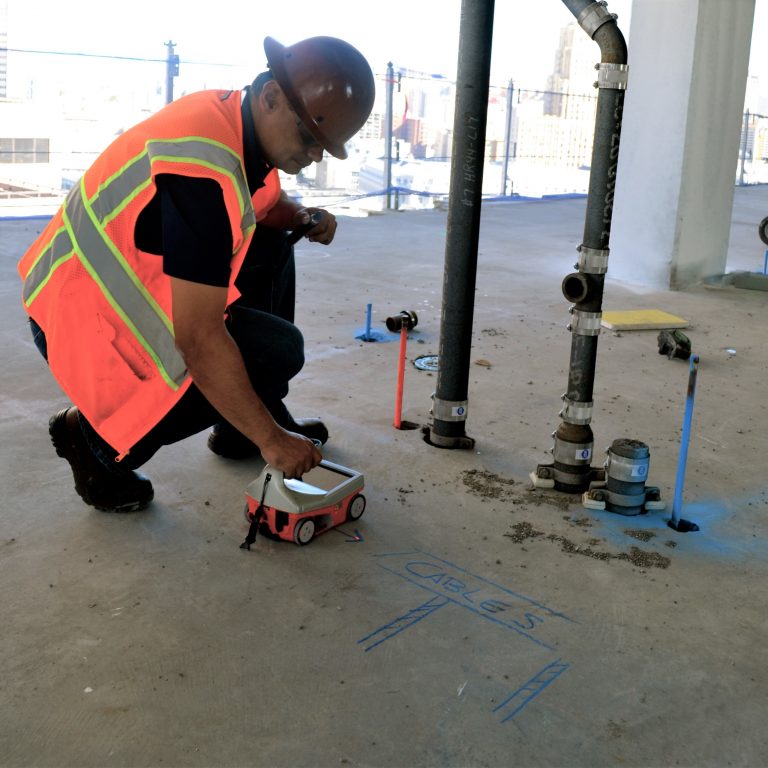Nationwide RainierGPR Service Areas for Advanced Concrete Scanning
Nationwide RainierGPR Service Areas for Advanced Concrete Scanning
Blog Article
Concrete Scanning: An Important Step In The Direction Of Making Sure Architectural Integrity and Security
In the realm of building and construction and facilities upkeep, the importance of concrete scanning can not be overemphasized. By using sophisticated innovation and methods, concrete scanning offers as a critical device in making sure that the honesty and safety and security of bridges and buildings are maintained to the greatest requirements.
Importance of Concrete Scanning
Concrete scanning plays an important role in making certain the architectural stability and safety and security of structures and infrastructure jobs. By making use of advanced innovations such as ground-penetrating radar (GPR) and electromagnetic induction, professionals can non-destructively check concrete structures to spot possible defects, voids, embedded objects, and reinforcement layout. This process allows very early detection of abnormalities that could jeopardize the security of a structure, protecting against pricey problems and making certain the safety and security of occupants.
Prior to drilling, reducing, or coring into concrete, scanning assists identify the exact locations of rebar, post-tension wires, and various other ingrained aspects, minimizing the threat of unexpected hits that could lead to structural weak points. Additionally, concrete scanning help in high quality control by confirming the thickness of concrete covers and finding any type of inconsistencies that might affect the overall durability of the framework.
Technology for Concrete Inspection

Advantages of Very Early Detection
Timely detection of architectural concerns can considerably alleviate threats and make certain the longevity of construction projects. By determining prospective troubles at an early stage in the building procedure, stakeholders can take positive actions to address problems prior to they intensify into larger and extra expensive problems. Among the essential advantages of very early detection is the avoidance of structural failings, which can present serious safety hazards and lead to project delays and monetary losses.
Furthermore, very early discovery enables timely repair services and upkeep, which can help prolong the life-span of the structure. By addressing problems immediately, construction teams can avoid costly fixings or also the need for early replacement of architectural elements. This aggressive technique not only conserves money and time but additionally improves the general safety and security and durability of the building job.
In addition, very early detection can boost job planning and decision-making by supplying stakeholders with valuable understandings into the problem of the framework. Armed with this information, task managers can make informed selections pertaining to building and construction timelines, materials, and methods, bring about much more effective and reliable project outcomes.
Guaranteeing Structural Stability
Ensuring the architectural stability of a construction task is critical to its safety and durability. Concrete scanning plays an essential duty in making certain structural security by discovering prospective problems such as gaps, delamination, or support rust that can compromise the integrity of the structure over time.
By utilizing advanced scanning modern technologies like ground-penetrating radar (GPR) and electro-magnetic induction, construction specialists can non-invasively check concrete structures to identify locations of problem underneath the surface. This proactive strategy enables the very early discovery of you could try these out defects or weaknesses, allowing punctual repair work or support to avoid structural failures.
Routine concrete scanning throughout different building and construction phases and throughout the life cycle of a framework can help preserve its security, reduce threats, and guarantee the safety and security of residents. By focusing on structural security through concrete scanning, building and construction projects can enhance their resilience and resilience, inevitably adding to better safety and security and longevity.
Stopping Crucial Failings
To safeguard against devastating occasions, meticulous surveillance and positive upkeep are essential in avoiding essential failings within architectural frameworks. Spotting possible concerns prior to they intensify is vital to stop architectural failings. Carrying out routine inspections, such as concrete scanning, can disclose covert flaws like spaces, cracks, or deterioration that might jeopardize the integrity of a structure. By making use of advanced scanning modern technologies like Ground Permeating Radar (GPR) or Concrete X-ray, designers can non-destructively assess the condition of concrete and determine weak points that require reinforcement or repair work - RainierGPR Service Areas.

Verdict
In conclusion, concrete scanning plays a crucial function in ensuring structural my latest blog post stability and security by making use of innovative technology for early detection of prospective concerns. This proactive technique helps prevent crucial failings and guarantees the security of frameworks. It is necessary to prioritize concrete inspection as a standard technique to protect the long life and safety and security of structures and facilities.
Concrete scanning plays a crucial duty in making sure the structural integrity and security of buildings and framework projects. In addition, concrete scanning help in high quality control by verifying the thickness of concrete covers and detecting any kind of discrepancies that might influence the total durability of the framework. Concrete scanning plays an essential role in making certain structural security by detecting potential issues such as gaps, delamination, or reinforcement corrosion that might endanger the stability of the structure over time.

In verdict, concrete scanning plays an essential duty in ensuring structural integrity and security by making use of sophisticated technology for very early detection of possible problems.
Report this page